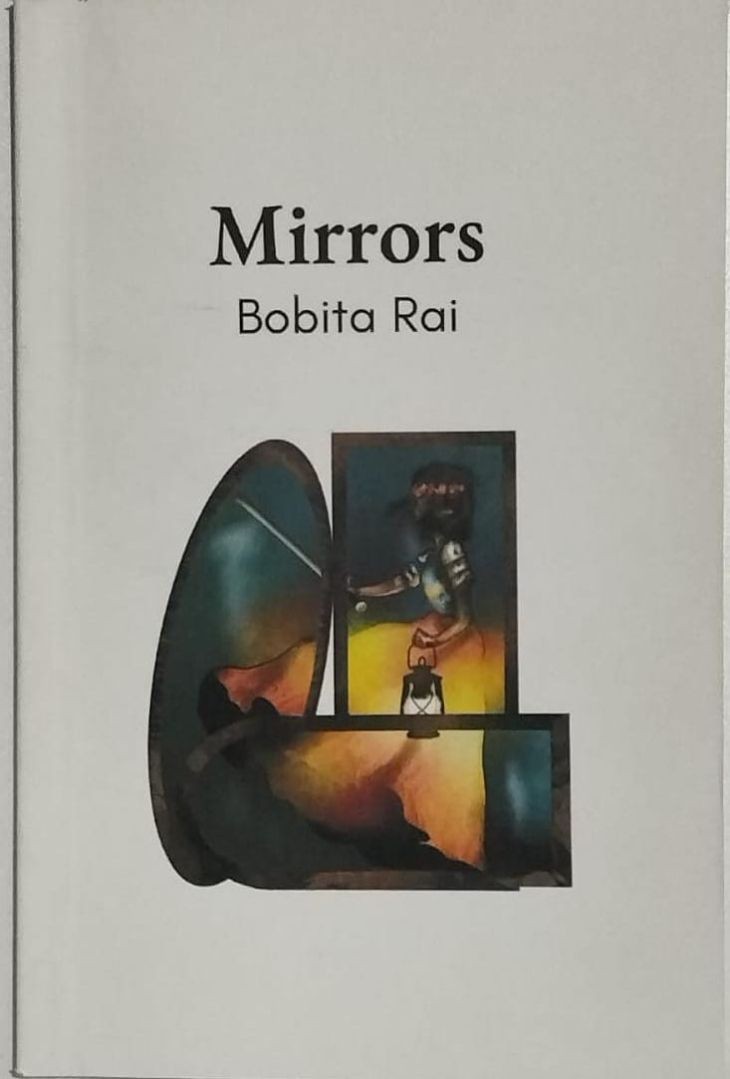
Emisenla Jamir
Bobita Rai’s debut book, Mirrors, is a collection of 40 poems that is “sprinkled with scattered pieces of my emotions and imaginations” (Rai, Introduction). In a world that is often plagued with cynicism and discontent, Rai’s poems are hopeful and uplifting. The poet unpeels layers of herself and allows the readers a glimpse into her mind. There are poems of gratitude and happiness, of sorrow and helplessness, and most importantly, hope. While it is very easy to fall into pessimism and take a bleak approach to life, Rai echoes Shelley’s attitude in her determination to find hope in the face of despair.
Mirrors is divided into three sections, ‘Expression’, ‘Emotion’ and ‘Imagination’. The poet shares her memories, her observations and thoughts on varied subjects. In the poem, “My Shangri-La”, the poet writes of her childhood, “light and bright with indelible artefacts of/ coloured memories”, but come adulthood and it sings a sombre tune, “…it was terribly dark, darker than the/ darkest night”. There are hints of some tumultuous and difficult times, but always, the poet’s optimism shines through.
Biblical references abound aplenty in Rai’s poems centring around the figure of Christ. In the poem, “My Shangri-La”, Christ is seen as the gardener holding the lamp, “His lamp is bright enough to light up my palace”, while in another poem, he is referred to as a potter, “The gentle hands of the Potter/ immaculate and fragile, / neatly picked all bits and pieces” (“Reverie”).
The poet is also preoccupied with nature, and mentions of various animals can be found in this collection, particularly in the section titled, ‘Imagination’. Rai sees herself linked with the natural world as she likens herself to a cloud, a daffodil and an ant.
In the poem “The Cry”, Rai imagines the earth as a woman on the brink of childbirth, much like Temsula Ao’s poem, “Earthquake”. However, what separates “The Cry” from Ao’s “Earthquake” is hope. Ao writes of nature giving birth to destruction, whereas Rai dreams of nature birthing a better world. What with the destruction of earth and the alarming climate changes taking place, one might be forgiven for envisioning a world that is less than hopeful. For Rai, however, the outlook is positive. She imagines an earth that is renewed and rejuvenated. The turmoil is but the pangs of childbirth that will eventually lead to a newer earth, perhaps a better one than the present.
In her other poems, Rai also takes note of societal pressure to conform and fall in line with the rest of the world. In the poem “Advices”, the poet writes of unwelcome advice that is often heaped upon by people.
“Oh! You should do it this way
No! You must do it that way
what a dilemma it is
to be overwhelmed by advices,
they are too many
I live in a land where advices are free;
if I ask for one, I get extra three.”
Rai’s response hits at the intended target with humour. However, not all poems are light in nature. In the section ‘Emotions’, the poet writes of challenges and conflicting exchanges with an unnamed other. In this section, the human ego and pride take centre-stage and often veer towards the destructive. The poet touches on the breakdown of communication, estrangement and indifference. In a poignant moment, the poet writes, “and when you look into my eyes/ then in haze you’ll see my tears, / drops of tears on your brows/ you will think that’s your sweat!”
The poet writes of difficult days but does not allow herself to wallow in self-pity. Bobita Rai’s poems are meditations on life and the act of living. She is deliberate in her desire to accept life’s lessons, both the good and the bad, without allowing herself to be weighed down by them. Her poems reveal her deep and unwavering faith in God, through whom she finds restoration. Her poem, “Perpetual Hope”, can best sum up the book,
“Hope blows her trumpet loud
optimism sings; this too shall pass
the eyes of the children do not lie
they hunger for a better world,
huddled to console each other
and to breed a world
that would tremble not again.”
There is extraordinary hope and resilience in the way Rai views the world, even while watching it through tired lenses, and perhaps that is what the poet aims to achieve, after all, to build a world that would not tremble again.





